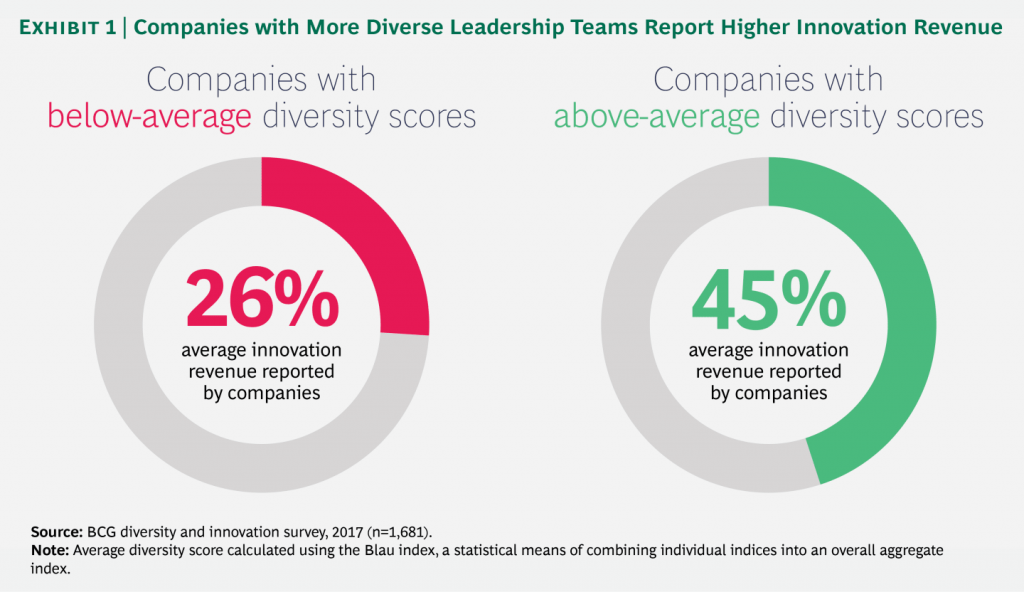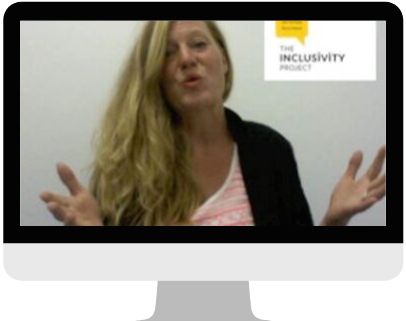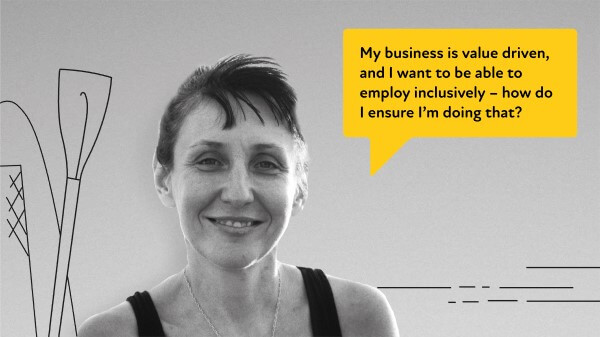Are your job adverts reaching a range of people with the right skills and talent to grow your business?
Switching to more inclusive recruitment processes could help you attract the diverse workforce you need, especially following Coronavirus.
We’ve put together five steps for switching to more inclusive recruitment practices. But first, let’s recap why diversity is good for business.
Diversity drives business innovation
There is a growing body of evidence about the benefits of diversity and inclusion, from better financial returns to higher levels of innovation. Having a team with a breadth of business experiences, skills and perspectives can help you to adapt to challenging climates.
In our recent blog post, Mark Shayler, leadership and sustainability coach, said that embracing diversity within your business and your customers are key to innovation and profit. Mark said it’s worth considering your business reputation if you are not inclusive.
A Boston Consulting Group study found that companies with more diverse management teams have 19% higher revenues due to innovation.
This was significantly higher for tech companies, start-ups and innovative industries. That’s a promising statistic for Cornwall’s fast-growing tech industry, which employs over 2,300 people in Truro and Redruth alone.

How can you adopt inclusive recruitment processes?
Grace Williams, from Sue Willmott HR and Careers Consultancy, told us that a positive approach to diversity and inclusion can help small businesses to attract and retain talented staff.
Grace recommends having an inclusive policy in place for your business and shares five steps for switching to an inclusive recruitment model that’s right for your business.
1. Learn from inclusive businesses
Research larger companies who are already working towards creating a more diverse workforce. Most companies publish information on their website. Why not explore the diverse make-up of their team and read about their ambitions and objectives? Then you can find out what recruitment techniques helped them to achieve their goals.
One example is from Blue Fruit Software in Cornwall. Steve Forth, Financial Director, says that they focus on hiring people with the right aptitude because with specialist training staff become highly skilled. Listen to Cornwall Beacon’s case study to find out more.
2. Get legal advice
Both age and disability are protected characteristics in the United Kingdom under the Equality Act 2010 and employers have a legal obligation not to discriminate, directly or indirectly, against older people or people with disabilities.
To help you understand your legal obligations, visit the Beacon project to get advice and information on everything disability, illness and work-related.
3. Try different networks and approaches, including job trials
To reach a more diverse pool of applicants you can try different recruitment platforms like Unlocking Potential.
You could also contact your local Job Centre and Welfare to Work networks who can help you make your recruitment process more accessible. They will help you find applicants who have the right skills and can set up job trials.
Trials give you and your applicant the chance to decide if your business is the right place to help them thrive.
4. Create processes for adverts and applications
Create checklists and processes for every stage in the recruitment process to ensure your business follows inclusive practices.
For job adverts and applications, include everything from the font and language you use to the criteria you list. For example, Microsoft recommends using alternative text to accompany images and tables, larger font sizes (11pt or larger) and sans serif fonts.
The RNIB share that bright colour schemes can be a big problem. To check the accessibility of the colours you use the charity recommends reading Axess Lab’s list of seven great, free colour contrasts tools.
You should also ensure images used in adverts avoid stereotyping – so ensure you represent a diverse range of people of different ages, genders and ethnicities. This will help prevent the perpetuation of unconscious bias against disabled people too.
Consider the format of your applications to ensure they are accessible to people of all ages and for those with disabilities.

5. Provide staff training and education for interviews
True diversity can only be achieved through organisational culture.
Line Managers within small organisations may not have had experience recruiting or managing someone with health conditions or a disability. Management training and workplace awareness can help to combat misconceptions to ensure hiring is transparent and evidence-based. Interview guides for staff can help to avoid unconscious bias.
One example from the Eden Project, where Dawn George the Director of Human Resources explains that their blind recruitment practices mean that recruiting managers don’t see the information relating to a candidate’s equality data. Watch the video to hear more.
For more information about Sue Willmott HR and Careers Consultancy, you can visit their website. You can also read the Beacon’s practical tips for inclusive job advertising and interview techniques.
Subscribe to our mailing list to receive more recommendations and resources for creating more inclusive recruitment practices and processes.
_________________________________________
Have you already signed up to our newsletter…?

When you sign up, as well as being the first to know about our events, you get access to our webinar explaining how businesses like yours could get funding and university expertise supporting their new ventures in wellbeing & inclusion.


Recent Comments